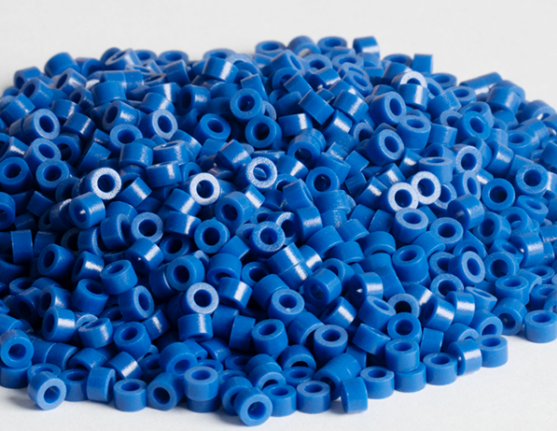The Future of Glass to Metal Seal: Innovations and Emerging Technologies
Release time:2025-04-16
The demand for glass-to-hermetic sealing is rapidly evolving. As these sectors move toward miniaturization, higher operating voltages, and extreme environmental performance, traditional sealing methods are being challenged. In response, glass-to-hermetic seal technology is undergoing significant innovation. From new material systems to advanced manufacturing techniques, a new era of precision hermetic sealing is emerging.
This article explores the key innovations, material trends, and technology shifts shaping the future of glass-to-hermetic seals.
Summary Takeaways
- Low-temperature sealing glass systems (e.g. phosphate-based, bismuth-based) are enabling safer, more energy-efficient sealing of heat-sensitive components in electronics and optics.
- Matched-expansion sealing materials, like Kovar-compatible glasses, remain critical in ensuring thermal stability across high-stress environments such as aerospace, medical, and industrial systems.
- Hermetic battery sealing is gaining momentum with the growth of lithium-based energy storage and long-life battery applications.
- Hybrid glass-ceramic-metal sealing structures are enhancing mechanical robustness and thermal cycling resistance in high-voltage and automotive systems.
- Emerging trends include laser-assisted sealing, miniaturized micro-hermetic packaging, and AI-guided simulation for seal design — enabling more efficient and customizable production workflows.
- The industry is evolving toward multi-material integration, sustainability, and intelligent sealing architectures to support the next generation of smart systems and critical technologies.
What Are Glass-to-Hermetic Seals?
A glass-to-hermetic seal (also called a glass-to-metal seal or GTMS) is a technology used to create a hermetically sealed interface between dissimilar materials — typically glass and metal or glass and ceramic — to ensure protection from:
-
Moisture and gas ingress
-
Thermal cycling and corrosion
-
High pressure and vibration
-
Electrical arcing or leakage
Glass acts as both an electrical insulator and a chemical barrier, making it ideal for use in components like:
-
Battery end caps
-
Feedthroughs
-
Power modules
-
High-voltage connectors
-
Medical device housings
-
Aerospace avionics
Key Innovations Transforming Hermetic Sealing
1. Low-Temperature Sealing Glass Systems
Traditional glass sealing often requires high processing temperatures between 900°C and 1000°C. However, emerging sealing glass systems based on phosphate, bismuth oxide, or zinc oxide are now enabling vacuum and gas sealing at temperatures as low as 500–600°C.

Benefits:
-
Reduces thermal stress on sensitive components
-
Enables sealing of plastic or polymer-supported systems
-
Cuts down energy usage and production costs
-
Improves compatibility with surface-mounted electronics and microstructures
2. Matched CTE Glass for Iron, Kovar, and Nickel Alloys
The performance of a hermetic seal is largely determined by how well the coefficient of thermal expansion (CTE) of the glass matches that of the metal or ceramic. Advanced glass systems are being developed with precise CTE ranges to match:
-
Kovar alloys (Fe-Ni-Co) for aerospace and RF applications
-
Iron-based alloys for industrial sensors
-
Nickel-based alloys for corrosion-resistant systems
These matched systems prevent cracking and stress failure during thermal cycling, ensuring decades of sealing integrity.
3. Hybrid Glass-Ceramic-Metal Seals
Next-generation designs are incorporating multi-material hybrid seals, combining the benefits of:
-
Glass (hermeticity, dielectric strength)
-
Ceramics (mechanical strength, thermal stability)
-
Metals (conductivity and structural support)
These are increasingly used in:
-
Electric vehicle (EV) power modules
-
High-voltage isolation seals
-
Harsh-environment electronic packages
The result: stronger, longer-lasting seals in compact, high-performance systems.
4. Laser-Assisted Hermetic Microsealing
As the trend toward miniaturized devices continues, manufacturers are adopting laser-assisted microsealing methods. By using precision-controlled lasers to heat localized areas, it's possible to:
-
Seal small-scale electronic packages without damaging sensitive elements
-
Avoid global heat buildup
-
Enable integration into MEMS, optoelectronics, and microfluidic devices
This is a key enabler for micro-hermetic packaging in medical, telecom, and aerospace applications.
5. Advanced Process Control & AI-Based Simulation
Digital tools such as AI-driven thermal modeling and finite element analysis (FEA) are allowing engineers to simulate:
-
Glass flow and shrinkage
-
Bonding behavior under pressure
-
Thermal mismatch stress
This leads to better seal design optimization, faster prototyping, and lower defect rates — ideal for industries with tight qualification timelines and mission-critical performance metrics.
Materials Driving the Future of Hermetic Seals
|
Material |
Primary Use Case |
Key Benefits |
|---|---|---|
|
Phosphate-Based Glass |
Low-temp vacuum sealing |
Process temp ~550°C, high adhesion |
|
Bismuth Oxide Glass |
Optoelectronic modules, medical sensors |
High refractive index, good for IR/laser |
|
Iron Sealing Glass |
Industrial sensor sealing |
CTE ~9.2–10.5 × 10⁻⁶/K, strong mechanical bond |
|
Kovar Sealing Glass |
Aerospace, high-frequency packages |
Matched expansion, high reliability |
|
Glass-Ceramic Blends |
High-voltage isolation, EV applications |
Shock resistant, thermal cycling endurance |
Applications & Industry Trends
Medical Devices & Implants
-
Micro-hermetic encapsulation of sensors and circuits
-
Biocompatible sealing materials
-
Long-term resistance to bodily fluids
Electric Vehicles (EVs)
-
Hermetic battery sealing for Li-ion and solid-state cells
-
Power feedthroughs for motor inverters and battery packs
-
Pressure and thermal protection in compact spaces
Aerospace & Satellite Electronics
-
Matched-seal headers for high-altitude/vacuum conditions
-
Resistance to ionizing radiation and shock
-
Support for thermal cycling from -100°C to +200°C
Industrial & Harsh Environment Sensors
-
Vacuum-tight glass seals for high-temp, corrosive gas measurement
-
Long-term durability in oil, gas, and mining operations
Future Outlook
The next 5–10 years will see continued advancement in:
Material Sustainability
-
Development of lead-free, eco-friendly sealing glasses
-
Recyclable sealing materials for high-volume products
Smart Hermetic Packaging
-
Integration of leak-detection sensors in sealing components
-
Self-healing or adaptive seal materials (early-stage R&D)
Automated, Scalable Manufacturing
-
Inline quality control, laser sealing robots, and 3D-printed sealing components
-
Custom, small-batch production with faster turnaround






